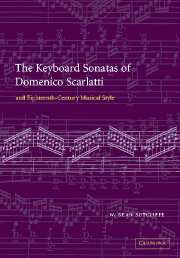3 - Heteroglossia
Published online by Cambridge University Press: 22 September 2009
Summary
AN OPEN INVITATION TO THE EAR: TOPIC AND GENRE
If Scarlatti had a genius for leaving few traces in life, he showed the same talent in his work. We have already reviewed the difficulties of classifying his style in the large, issuing both from the broader historiographical problems associated with eighteenth-century music and from the composer's own anomalous position within such a system. On a more intimate scale too the details of Scarlatti's language are difficult to fix. In particular, his relationship to such notions as topic and genre is ambiguous and elusive. The exact source or stylistic location of what we are hearing at any one moment is often quite unclear. On the other hand, the sonatas seem unprecedentedly open to a range of influences – hence the panorama tradition – and unusually direct in their presentation of them. This is particularly true of all the popular material, which rarely offers occasion for pastoral nostalgia or a culinary exoticism. Thus we are faced with the paradox of a music that is turned outwards yet resists classification. If Scarlatti's range is ‘democratically wide’, there also appears to be a certain reserve in the avoidance of explicit allegiances of topic and style.
The critical difficulty has been to hold these two conflicting elements in some sort of equilibrium.
- Type
- Chapter
- Information
- Publisher: Cambridge University PressPrint publication year: 2003

